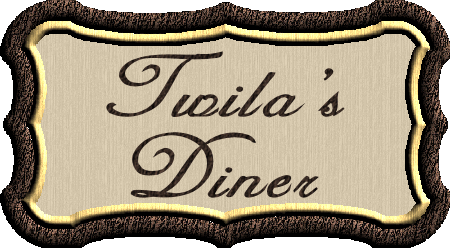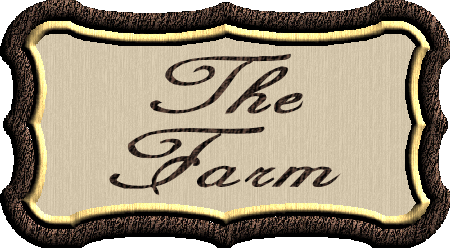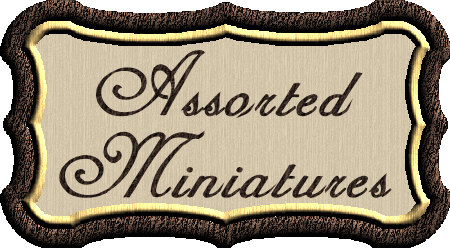|

Trying to explain MicroMiniatures to someone who's
never worked in this scale is not easy. Most can easily envision
standard dollhouse scale or 1/12 where 1 inch in miniature equals 1 foot
in real life. That's fairly straightforward for most people.
But when it comes to MicroMiniatures, most people who are not
miniaturists will say, "Don't confuse me with the math. All I know is .
. . it's tiny!"
Understanding the MicroMiniature scale or 1/144 where one inch equals
144 inches or 12 feet is not that difficult, but working in this scale
does cause one to have to measure in very minute fractions of an inch.
Oftentimes, if one understands the metric system, it is much easier to
measure in millimeters or even fractions of millimeters.
To give an example of MicroMiniature measurements, the average man in
this scale would be about ½ inch tall (or 12-13 mm), the average child
about 5/16 inch (or about 8 mm) and the average toddler would be about ¼
inch tall (or about 6 mm). The average room would be about ¾ inch tall
(although we often make rooms a little taller to make it easier to see
into them) and a two story house would be about 2½ - 3 inches tall (or
about 65-80 mm).
All of the structures I make are fully decorated, furnished and
landscaped. It's difficult for me to make just
a house - most of my miniatures are fully realized and detailed scenes
that either tell a story or have a "back story" to go with them. They
are fully populated and often the people have names and personalities.
It's just more fun this way!
I belong to an online community of MicroMiniature artisans. It's nice to
know that there are others out there who also work in what is commonly
known as "that insanely tiny scale" (although we tend to think of
standard dollhouse scale as "insanely huge"). I've learned much from the
members of the group and we have fun sharing our creations with each
other.
All of us "suffer" (actually enjoy) an affliction known to us as
M.E.S., or Micro Eye Syndrome. This syndrome causes us to look at
everything for it's potential use in our miniatures. For example, did
you know that cat whiskers are absolutely wonderful for painting details
on our miniatures? They're tiny enough to make detailing easy and yet
stiff enough to handle easily. I have friends who collect whiskers that
their cats shed and share them with me for this purpose.
Other items that work well in miniature are tiny little rivets
(planters), false eyelash clumps (flowers), decorative staples
(furniture), wooden coffee stirrers (wood planks), and bullet shaped
pierced earring backs (tables). Nothing is discarded without first
considering it's potential use in minis. One starts to see flower pots
in tiny seed beads, wine glasses in price tag holders, birds in no-hole
beads, and mirrors in metallic confetti. M.E.S. makes one see the world
around us in a whole new way. Once you become a real MES Sufferer you
will wonder why it took you so long to give MicroMinis a try!
It's amazing how quickly one's family can also develop M.E.S. My husband
and daughter often come to me and say, "Before I throw this away, I
thought maybe you could use it to make . . . " The syndrome is quite
contagious and we love spreading it to others.
So, now that you understand this "insanely tiny scale" just a bit more,
sit back and check out the links below to see some of the projects I've
completed. There are others in progress and I will post photos of those
as they are completed. |















| |